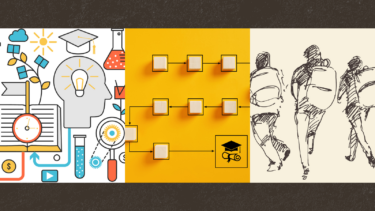States Sketch ‘Portraits of a Graduate’
Several state boards of education have adopted graduate profiles to better define the skills and knowledge students should master before they graduate high school. While their entry points and approaches to the work differ, South Carolina, Utah, Virginia, and Washington have all drawn up profiles that many call the North Star of their state education systems.
Particularly since the federal Every Student Succeeds Act (ESSA) opened the door to state-specific accountability measures, states have searched for ways to better shape and communicate the elements of school and system performance that more holistically reflect what preK-12 students should be able to know and do upon graduation. Profiles of a graduate provide the broad strokes for a range of skills and dispositions that go well beyond reading and math. In creating them, states have sought to respond to the critique that a high school diploma is not sufficient to prepare all students to engage in the next steps in work, postsecondary education, and life.
A focus on competency-based education (CBE) is one way that states have sought to make their high school diplomas more meaningful. Also called mastery-based education, this approach bases student advancement on demonstrated learning—not on the course credits students amass nor the time they have spent sitting in a particular grade or credit-bearing course. …
States Sketch 'Portraits of a Graduate'
Related Content
-
Transforming Learning through Competency-Based Education
States are adopting a range of policies to personalize student learning and move away from seat-time rules.
-
Five Questions State Boards Should Ask to Advance College and Career Readiness
State boards can leverage dual enrollment opportunities, rigorous coursework, new graduation pathways, course alignment with high-opportunity careers, skill building for the jobs of the future, and tracking of student attainment after graduation to expand college and career readiness.
-
Virginia Rethinks High School in Its Profile of a Graduate
This piece is from the May 2017 State Education Standard


 i
i
 i
i